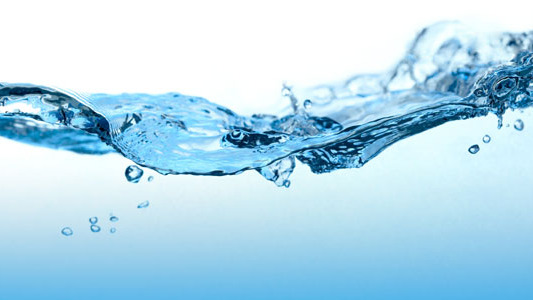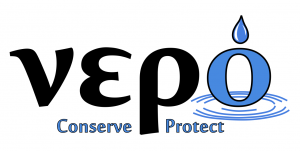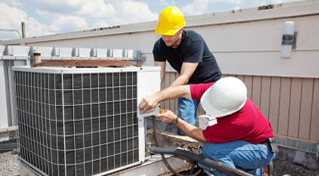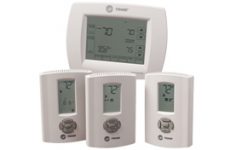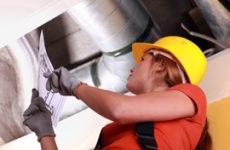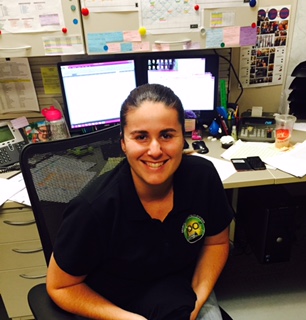Water Emergency
Water System Failure – Emergency
Usage Target – 50% reduction of overall system water use
Emergency conditions are implemented when:
- Water demand approaches a reduced delivery capacity for all or part of the system, creating a situation in which water system demand exceeds water system capacity, for an extended length of time, as determined by the General Manager;
- A major water line break, or a pump or other system failure occurs, which causes a loss in the capability to provide treated water service; or
- A natural or man-made contamination of the water supply.
Customer and City Actions
- Assess the severity of the problem and identify the actions needed and time required to resolve the problem;
- Implement immediate measures to notify the public as to water system or water source failure;
- Severely restrict or prohibit, as appropriate, all water system use in the affected service area;
- Arrange for the emergency purchase of water from alternate sources for which there exists the proper agreements for such purchases; and
- Customers will discontinue or severely restrict all use of potable water from GUS water system until notified by City that a safe and adequate water for public use is restored.
Phase 3 – Water Emergency
Usage Target – 50 percent reduction of overall system water use.
Phase 3 Conditions are implemented when:
- An event occurs where water demand exceeds the supply and severe conservation measures are required to maintain the ability to provide the proper level of service as determined by the GM, or designee.
Customer and City Actions.
- Increase efforts to inform the public on water conservation strategies.
- Increase detection and repair of water leaks in the distribution system.
- Suspend hydrant testing.
- Prohibit all water waste.
- Prohibit all non-essential water use.
- Prohibit landscape irrigation water use.
- Prohibit or limit as deemed necessary all industrial water use.
- The City shall arrange for the emergency purchase of water from utilities for which there exists proper agreements for such purchase.
Phase 2 – Water Restrictions
Usage Target – 35 percent reduction of overall system water use.
Phase 2 Conditions are implemented when:
- The water level in the City’s No. 1 well drops to, or stabilizes below 40 feet above the pump suction for a period of more than five consecutive days.
- Lake Georgetown level drops to 765 feet (above mean sea level), and no rainfall or other inflow predicted, and the Williamson County Raw Water Line is unavailable or is not capable of maintaining Lake Georgetown Level above 760 feet under the current demand.
- An event occurs where water demand exceeds the supply and aggressive conservation measures will maintain the ability to provide the proper level of service as determined by the General Manager.
Customer and City Actions
- Increase efforts to inform the public on water conservation strategies.
- Increase detection and repair of water leaks in the distribution system.
- Suspend hydrant testing.
- Prohibit all water waste.
- Suspend the use of potable water for the following City municipal operations:
- Vehicle washing.
- Street cleaning.
- Landscape irrigation in City parks (does not include athletic fields) except by handheld hose or drip irrigation.
- Prohibit all non-essential water use except:
- The addition of water to a pool or splash pad where necessary to maintain the water purification system in service or to maintain structural integrity of the pool.
- The washing of vehicles or boats at a commercial car wash or service station.
- Restrict landscape irrigation use to the evening (7:00 p.m. to midnight) and morning hours (midnight to noon) in accordance with an irrigation schedule that provides for no landscape irrigation on Monday with landscape irrigation permitted no more than one day per week with the day of week and irrigation start time specified based upon customer address.
Phase 1 – Water Conservation
Usage Target – 20 percent reduction of overall system water use.
Phase 1 Conditions are implemented when:
- The water level in the City’s No.1 well drops to, or stabilizes below 50 feet above the pump suction for a period of more than five days.
- Lake Georgetown water level drops to 770 feet (mean sea level), and no rainfall or other inflow is predicted, and the Williamson County Raw Water Line is unavailable or is not capable of maintaining Lake Georgetown level above 765 feet at current demand.
- An event occurs where water demand exceeds the supply and moderate conservation measures will maintain the ability to provide the proper level of service as determined by the GM, or designee.
Customer and City Actions
- Increase detection and repair of water leaks in the distribution system.
- Suspend hydrant testing.
- Prohibit all water waste.
- Restrict landscape irrigation use to the use of automatic irrigation systems or hose-end sprinklers during the evening (7:00 p.m. to midnight) and morning hours (midnight to noon) in accordance with an irrigation schedule that provides for no landscape irrigation on Monday with landscape irrigation permitted no more than two days per week with the day of week and irrigation start time specified based upon customer address.
- Landscape irrigation use is permitted at any time, if it is used:
- By means of a hand-held hose, soaker hoses, or drip irrigation systems.
- At a commercial plant nursery.
- During the testing of new irrigation system installation or existing irrigation system repair.
Backflow
Customer Information
Backflow Device Frequently Asked Questions (FAQ)
What is backflow?
Backflow is the reverse flow of water in any pipeline, causing non-potable water to flow into the public water supply. Water that is always under pressure can only flow in one direction. If a water main were to break, the pressure in the water main could drop causing water to flow towards the point of lowest pressure. Backflow devices prevent the entry of possible harmful substances into the drinking water supply.
What are backflow prevention devices?
Backflow prevention devices are used to protect our water supply from contamination due to backflow. Without these preventative devices, water could become contaminated and not be safe for consumption.
Do I have a backflow prevention device?
Backflow devices can be found in houses with pools and/or irrigation systems, restaurants and medical facilities. All of the plumbing system connections require a backflow device.
All commercial properties are required to have a backflow prevention device. Residential properties with an irrigation system are required to have a backflow prevention device. In most residential applications, the backflow prevention device can be found by the curb in a separate box by your water meter. Commercial installations can be found at the curb or inside the building.
Why do I need to have my device tested?
Backflow prevention devices degrade over time and therefore must be tested annually to ensure the device is in complete working order.
*At this time, residential properties with pools or irrigation systems are required to only have a backflow test performed upon installation.
How do I get my Commercial backflow prevention device tested?
Georgetown Utility Systems sends notifications, via our vendor, VEPO, LLC, to businesses 30-60 days before their testing is due.
Once you receive a notice, you will need to do the following:
1. Hire a registered backflow tester (access to registered testers can be located here).
2. Have the registered tester submit the paperwork via VEPO, LLC.
The backflow tester will need to:
1. Perform the required test
2. Submit the test through VEPO, LLC here.
3. Submit the fee of $11.50 per test report via the VEPO website
Tester Information
Backflow Device Frequently Asked Questions (FAQ)
What has changed?
We will be implementing a process change to take advantage of an online backflow management system for entry and storage of Texas Commission on Environmental Quality (TCEQ) approved Backflow Test & Maintenance and CSI reports. Georgetown Utility Systems has partnered with VEPO, LLC to provide this online system.
When does the change happen?
Georgetown Utility Systems will start using this system as of March 26, 2018.
Where do I go to submit my backflow device test?
All tests will need to be submitted by the BPAT into the VEPO online system here.
What does the new process look like?
On the VEPO website, the backflow tester will:
- Create an account – each tester will have their own password protected login to the system
- Register with VEPO – for testers already registered with VEPO, simply add Georgetown to your account
- Register your license – VEPO will verify your license and validate your account
- Register your test guages
- Enter Test & Maintenance, CSI reports into the online system
- Checkout
- The fee is $11.50 per test report submitted and is payable via the VEPO online system
Does Georgetown Utility Systems still take paper copies?
Testers will no longer be able to submit paper backflow Test & Maintenance CSI reports to Georgetown Utility Systems. All paperwork must be submitted through the VEPO online system.
Please click on the VEPO logo for more information.
HVAC
Proper heating, ventilating, and air-conditioning (known in the trade as HVAC) are key to maintaining a comfortable, healthy and productive work environment. Collectively, these systems account for approximately 40% of the electricity used in commercial buildings. Improved heating and cooling performance along with substantial energy savings can be achieved by implementing energy-efficiency measures.
Whether you wish to improve the efficiency of your existing heating and cooling systems or are considering upgrading to a new system, the information on this page will help you to make informed decisions!
Aretha
 Aretha, AMI & Billing Specialist
Aretha, AMI & Billing Specialist
Danielle
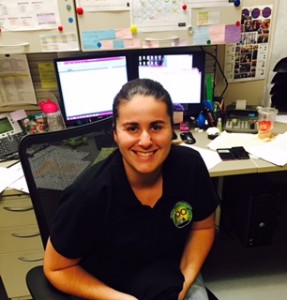 Danielle, AMI Billing Specialist
Danielle, AMI Billing Specialist
Jack
 Jack, Development Account Specialist
Jack, Development Account Specialist

